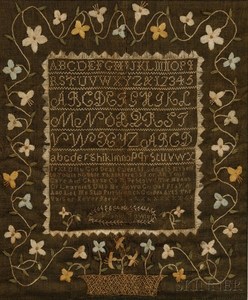 Linsey-woolsey is a fabric that is exactly what it sounds like: a combination of linen and wool woven together to create a coarse, durable fabric, sometimes woven plain or as a twill (for twill, think the diagonal weave pattern often seen on denim). “Lin” is an old term for flax, the plant whose fibers are used for linen. Occasionally, it’s referred to as “woolsey-linsey” or by the blending of the two terms, “wincey.”
Linsey-woolsey is a fabric that is exactly what it sounds like: a combination of linen and wool woven together to create a coarse, durable fabric, sometimes woven plain or as a twill (for twill, think the diagonal weave pattern often seen on denim). “Lin” is an old term for flax, the plant whose fibers are used for linen. Occasionally, it’s referred to as “woolsey-linsey” or by the blending of the two terms, “wincey.”
Linsey-woolsey as a term has been in use since the 15th century, although the fabric itself was used much earlier (even making an appearance in the Old Testament where its blended nature made it forbidden) and it gained popularity in the American colonies in the early years when wool was not as common as it was throughout Europe. Its rough nature made it popular as a utilitarian fabric, as it was cheap, wore well and was heavy enough to be warm, but for these very reasons, it also had an association with poverty and lower classes. It appears to have been used primarily for clothing, blankets and as a foundation for needlework (like the one pictured above).
The term has become somewhat diluted as it is often applied to a form (coverlets), to other coarse blended fabrics, including those of wool and cotton, or simply to the rougher “homespun” goods of the 18th and 19th centuries.



